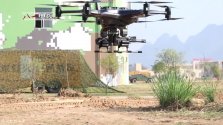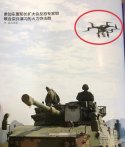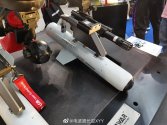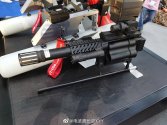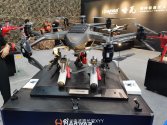Now with lessons pertaining to Ukraine in particular
Lesson 1: Tanks are useless and too vulnerable.
Well, think we've all heard arguments and counter arguments to that countless time, so I wouldn't elaborate on this point too much. Tanks as a blunt instrument of breakthrough are indeed quite dead, Infantry Anti-tank weapons have advanced too much and became too common, infantry screens cannot and will not protect tanks against ATGM, this is simply not possible for rifleman to defend tanks against 2 guys hiding in the tree line 2 km away. I believe tanks nowadays can more accurately be described as firesupport platforms, which are obviously still useful.
Lesson 2: Artillery win wars
This isn't a kneejerk response to US' wars as it is conventional wisdom, this isn't wrong but it isn't the full story. Artillery is responsible for the majority of casualties in past wars as well as the present one in Ukraine. This is widely known and as a result, the Russian military is the most artillery heavy in the world, by all accounts, it fired an astronomically number of shells in the opening phase of the Ukraine war. So why is it that Russia have so little territorial gain to show for such an enormous display of firepower while being unable to silence Ukrainian artillery though counter battery fire?
IMO, this is due to the almost criminal neglect of Reconnaissance portion of Reconnaissance Strike Complex. We would frequently see the so called "Human wave attacks" appear in Western discourse, which are more correctly interpreted as reconnaissance through contact, where infantry units are being sent forward to initiate direct contact with defenders which are then identified and flattened with artillery. Needless to say, defenders have an inherent advantage and those infantry units took massive casualties, which is highly demoralizing and debilitating to BTGs which are short on infantry to begin with.
I suspect that most of the shells fired in the early wars are simply wasted, as artillery are ordered to pour fire on phantom targets that might or might not be there. Russian units lack the capability to accurately assess the strength and position of defenders outside of the fact that they were being fired upon. I found this to have a shocking resemblance to the Iran-Iraq war, Iraq's military is well-equipped with the latest foreign artillery pieces as Saddam, informed by conventional wisdom, overloaded his military with it. Yet territorial gains are slow to non existent as mechanized divisions are halted by Iranian militias as they waited for their artillery do the heavy lifting for them when fired upon. Again, I don't want to discount the fact that assaults' without indirect fire are extremely costly, but lack of low cost reconnaissance via drones have cost the Russians dearly as they lack the intel to leverage their artillery superiority.
Lesson 3: MALE Drones are wonder weapons at first, but becomes useless after air defenses come online.
MALE drones in this context specifically refers to large reconnaissance strike drones like the Bayraktar or larger. The popular narrative now is that success of MALE drones are short-lived and that they have limited value due to their vulnerability to air defense, their success at the start of the war are purely due to initial confusion in the Russian ranks.
I feel like the narrative have swung too far in the other direction, as this fail to take into account that Ukraine's SEAD capabilities are practically zero and Russia is the inheritor of the world's most comprehensive ground based air-defense systems. Pitting MALE drone against Soviet air-defense systems with hardly anything else in the air is not the recipe for continued success. Comparatively, the air defense systems of the United States and its allies are much less advanced and numerous. Correct me if I'm missing something, but US SHORAD appear to be comprised mostly of stingers on Humvees.
It is in my opinion that MALE drones would be the most decisive weapons in the land component of the reunification war as it significantly enhances reconnaissance and strike at a fraction of the cost of manned air craft, while exploiting the SHORAD gap that are often present in western air defense systems. The terrain of Taiwan is also highly complex where the mobility of mechanized formations is heavily constrained, target acquisition and destruction of backline support assets is unlikely via direct contact or regular artillery. Unlike Ukraine, who completely relies on external actors to supply them with a meager number of MALE drones, China is the world's largest industrial base who manufactured its own drone fleet. China can easily manufacture a large enough drone fleet which will drastically amplify air support and overwhelm collaborationist air-defense when working in tandem of PLAAF SEAD.
For a very rough and imprecise analogy I would liken MALE drones to CAS aircraft/attack helicopters to Early Iron weapons and Bronze weapons, where the quality of Bronze weapons is meaningless compared to easy mass manufacturing of Iron weapons(early iron weapons are worse than Bronze weapons), you can bang on about how much more range and payload a manned aircraft can have but 1 manned aircraft will never provide the intel and on demand strike capability of 10 drones. What is curious for the US is how the cost of their own drones have ballooned out of proportion, so much so that their drones are as expensive manned aircraft, in this regard China have a distinct advantage.

